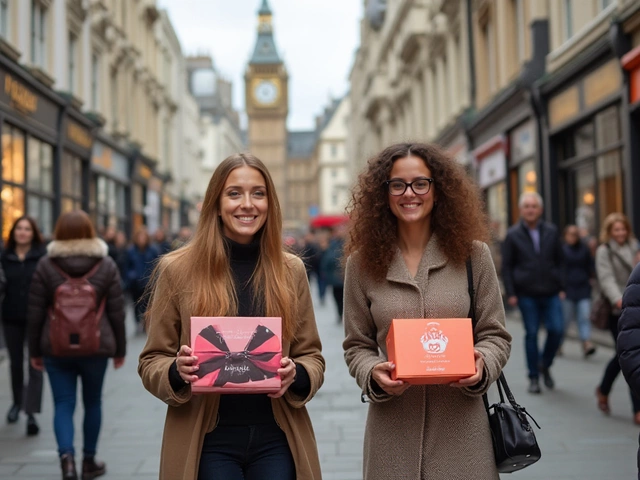Picture this: someone unboxes a cute pink package on TikTok, gasps over tiny serums, and leaves a glowing review for their monthly beauty fix. Feels like these boxes are everywhere, right? Skincare starters, dog treats, gourmet cheese—even Whiskers once got a box of fancy catnip. There’s something exciting about getting a bundle of surprises at your door, and heaps of entrepreneurs are scrambling to catch that thrill. But let’s get honest—does this model really make money, or is it just clever marketing wrapped in shiny tissue? The story behind subscription boxes is part gold rush, part juggling act.
The Story Behind Subscription Boxes: Why Everyone Is Obsessed
Subscription boxes didn’t just pop up overnight, but their recent explosion is wild. Monthly boxes used to mean just magazines, a bottle of wine, or old-school fruit-of-the-month clubs your aunt got at Christmas. Now, every niche has its own unboxing moment, from beauty skincare (think Ipsy and Birchbox) to organic snacks and home spa kits. Statista reported that the global subscription box market topped $28 billion in 2023, and the trend is still climbing. If you’ve followed YouTube since 2010, you probably remember those squealing “unboxing haul” videos that began the craze.
Why did this business grow so fast? For one, people love surprises—a psychological ‘reveal’ triggers that dopamine hit, making customers more likely to return. And when you’re stuck in the same routines (ugh, month six of winter in Wellington, anyone?), a treat on your doorstep just brightens the day. After the pandemic, shoppers fell in love with online shopping and quick-delivered joy; in fact, beauty boxes saw a 40% membership spike in 2020 alone. For brands, subscription models look dreamy: steady recurring revenue, predictable stock orders, and priceless customer loyalty. That’s the idea, at least.
But there’s a twist. Subscriptions are like relationships. People fall in love fast, but they leave quickly too. The average retention for subscription boxes? Just under 30% after 12 months. Keeping clients hooked is the real test.
The Money Math: Costs, Profits, and Where Boxes Win (Or Flop)
On paper, subscription boxes look like cash machines. Picture it: you sign people up for $30 a month, toss in $15 worth of product, and the rest is profit. If only it worked like that! The messy truth is that tons of boxes bleed cash the first year, since launching means juggling product sourcing, slick branding, marketing, and packing materials. Ever spotted an Insta-perfect box crammed with gold-foil tissue? Aesthetics aren’t cheap.
Let’s look at a real-world breakdown. Beauty subscription companies like Birchbox or Ipsy often negotiate with brands for sample sizes at 10-20% of retail price. If retail is $120, their cost might be $15-25 per box. Add in $5 packaging, $4 shipping, and $10 customer acquisition per user, and your per-customer cost is up to $44. If you’re charging $40 per box, you haven’t broken even—yet. Now add churn. Only a third of your signups will last beyond three months, so you must constantly market to new faces.
Here’s a quick visual to show margin breakdown for a typical beauty box in NZ dollars (2024 data):
| Item | Average Cost | Per $40 Box |
|---|---|---|
| Product (Sample sizes) | $15 | |
| Packaging/Branding | $5 | |
| Shipping (NZ only) | $4 | |
| Marketing/Acquisition | $10 | |
| Total Costs | $34 | |
| Revenue Per Box | $40 | |
| Net Profit Per Box | $6 |
Looks simple, but profits vanish fast if you misjudge any piece—maybe shipping jumps, or you need paid influencers to hit launch goals. That’s why tons of indie boxes go under within a year. But the upside for those who last? Customer loyalty pays off. FabFitFun reportedly moved into eight-figure profits by year three. Ipsy sent out over two million boxes a month by 2024, partly thanks to clever tier pricing (basic, deluxe, VIP perks), which helped absorb costs and kept profit healthier than most competitors.

The Secret Sauce: What Makes Subscription Boxes Succeed?
So what separates money makers from one-hit wonders? First up: a passionate niche. The least successful subscription boxes are bland or try to please everyone. You want super fans—the skincare junkies who try every mask, the pet parents obsessed with new treats, the craft beer geeks tracking rare cans. Narrow focus means fewer competitors, easier targeting (Facebook ads, influencer partnerships), and diehard loyalty when you send something truly unique.
Strong community matters too. Look at Glory Collab, a Wellington-based beauty box launched in 2022. Instead of curating generic face creams, they built a massive online group where users vote on brands and products for each box. This “crowdsourced curation” gives people a say—suddenly, subscribers feel like insiders instead of just customers. The founder, Sarah Ling, told Insider NZ she spends more hours moderating polls and chats than anything, but it creates word-of-mouth hype you just can’t buy. Sarah’s box saw a 55% subscriber retention rate (double the typical beauty box average) by 2024.
Clever logistics stop bleeding cash. Smart boxes avoid waste by sending out only pre-ordered quantities—no dusty shelves, no giant warehouses. Others use ‘add-ons’ so customers can tack on up to three extra goodies each month; this boosts order value at minimal overhead. And don’t ignore brand partnerships. Startups often score brand samples at deep discounts since it’s marketing for the brands—essential for profit in your first year.
Pro tip for would-be founders: email lists drive way more conversions than ads. Collect emails early, set up special “members only” previews, and get personal. Even my dog Bruno recognizes the box that says “Hello Bruno” every month. Make it feel like a gift, not a purchase.
The Biggest Risks and How Real Entrepreneurs Stack the Deck
The number one box-killer? Churn—people cancel after a few months and never return. Imagine spending piles to lure a subscriber, only to lose them before you recoup that cost. A McKinsey report found that more than half of beauty box subscribers bail within six months, usually out of boredom or sample fatigue. So you’ve got to keep things shifting. Fresh brands, unexpected extras, sneak peeks—think about it as dating. If you send the same card and sample lipstick every month, the magic dies fast.
Another brutal pitfall: scaling costs. Shipping gets sticky as soon as you want to serve rural addresses (or, in our case, the odd spot up the Wairarapa hills). International boxes face wild logistics nightmares. Little changes—fuel costs, new postal fees—can shred margins overnight. Some box owners get clever: they set a spend threshold for free shipping, or swap to lightweight packaging. Every gram matters. Bigger brands have a secret edge here; they get cheaper rates by negotiating with major carriers like NZ Post or DHL.
Then there’s competition. The barrier to entry keeps dropping—lots of template services let you launch a box in a weekend. That makes standing out even harder. One Kiwi example: Skinfood’s local subscription box boomed in 2022, then fizzled after too many copycats popped up offering the same facial cleansers with a different ribbon. Those who survived focused fiercely on curation, experience, or hyper-local partners.
If you dream of building a subscription box empire, do your homework. Test with a tiny pilot. Survey your ideal buyers, even if it’s just over Instagram. Nail down real shipping costs; don’t just guess. Plan for high turnover and fight to keep users excited. Some of the most successful box founders I know set up direct lines for customer feedback—sometimes using WhatsApp or private Slack groups. Anything to keep users feeling loved and heard. The key metric to watch isn’t signups; it’s how many customers stay six months down the line.
And behind every box, don’t forget: your audience is looking for connection, not just free samples. My friend Michelle, who started a vegan snack box from her Wellington flat, said her biggest win wasn’t money, but getting photos from families whose kids tried new foods for the first time. Still, her box covers her rent—and pays for enough dog treats that Bruno is now spoiled for life.
So, is there money in subscription boxes? Absolutely—if you nail a passionate niche, get creative about logistics, and make subscribers feel like insiders every single month. If you’re all in for the hustle and up for surprises, there's still room in the box for you.


